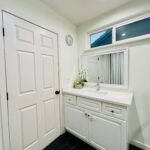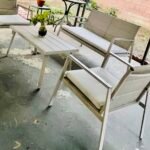Introduction: As we age, our bodies undergo various changes that can impact our balance, coordination, and strength. One of the most significant risks associated with aging is the increased likelihood of experiencing a fall. Falls can lead to serious injuries, reduced mobility, and a loss of independence for seniors. However, with the right knowledge and precautions, many falls can be prevented. In this guide, we’ll explore practical strategies and tips to help protect seniors from falls and promote their safety and well-being.
Understanding the Risks: Before delving into prevention strategies, it’s crucial to understand why seniors are more susceptible to falls. Several factors contribute to this heightened risk, including:
- Physical Changes: As we age, changes in vision, muscle strength, flexibility, and bone density can affect balance and coordination.
- Chronic Health Conditions: Conditions such as arthritis, diabetes, and Parkinson’s disease can increase the risk of falls.
- Medications: Certain medications can cause dizziness, drowsiness, or dehydration, all of which can contribute to falls.
- Environmental Hazards: Slippery floors, poor lighting, cluttered spaces, and uneven surfaces can pose significant fall risks for seniors.
Prevention Strategies: Now that we understand the factors that contribute to falls among seniors, let’s explore practical steps to prevent them:
-
Home Safety Modifications:
- Install grab bars in bathrooms and near toilets.
- Remove tripping hazards such as loose rugs, electrical cords, and clutter.
- Improve lighting in hallways, staircases, and other areas prone to poor visibility.
- Ensure that staircases have sturdy handrails and are free from obstacles.
-
Exercise and Physical Activity:
- Encourage seniors to participate in regular exercise routines focused on improving strength, balance, and flexibility.
- Tai chi, yoga, and water aerobics are excellent low-impact exercises that can help improve balance and reduce the risk of falls.
-
Regular Health Checkups:
- Schedule regular checkups with healthcare providers to monitor and manage chronic conditions.
- Review medications with healthcare professionals to identify any that may increase the risk of falls and explore alternatives if necessary.
-
Footwear and Clothing:
- Ensure that seniors wear supportive, non-slip footwear with good traction.
- Avoid loose-fitting clothing that may pose a tripping hazard.
-
Assistive Devices:
- Consider the use of mobility aids such as canes, walkers, or wheelchairs if needed.
- Ensure that assistive devices are properly fitted and maintained.
-
Nutrition and Hydration:
- Encourage seniors to maintain a healthy diet rich in calcium and vitamin D to support bone health.
- Stay hydrated, as dehydration can contribute to dizziness and falls.
-
Fall Detection and Monitoring Systems:
- Explore the use of technology such as fall detection devices or medical alert systems that can provide immediate assistance in the event of a fall.
Empowering Seniors: In addition to implementing these preventive measures, it’s essential to empower seniors to take an active role in their own safety. Encourage open communication about any concerns or challenges they may be facing related to falls. Provide education about the importance of following safety guidelines and seeking help when needed.
Conclusion: Preventing falls among seniors requires a multi-faceted approach that addresses both individual and environmental factors. By implementing home modifications, promoting regular exercise, monitoring health conditions, and fostering a supportive environment, we can significantly reduce the risk of falls and help seniors maintain their independence and quality of life. Remember, an ounce of prevention is worth a pound of cure when it comes to safeguarding the well-being of our aging loved ones.






abSalam
There are many variations of passages of Lorem Ipsum available, but the majority have suffered alteration in some form